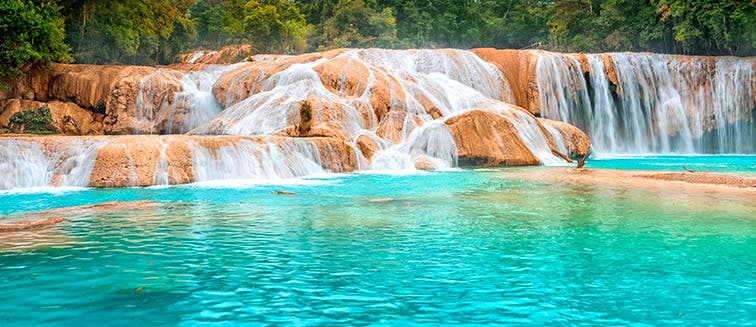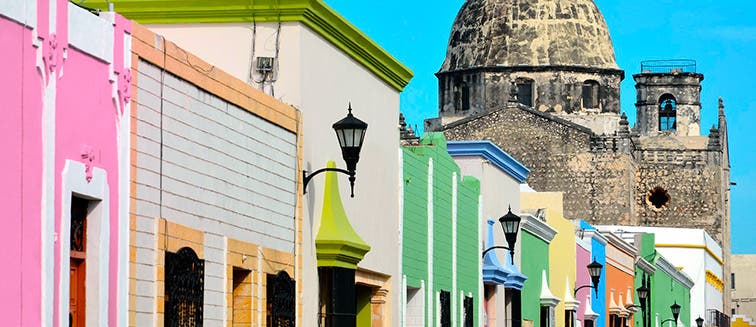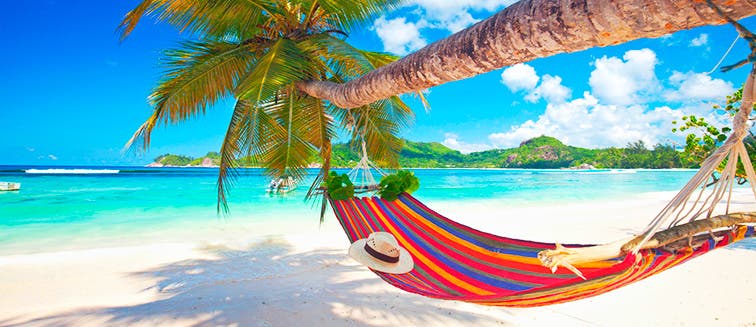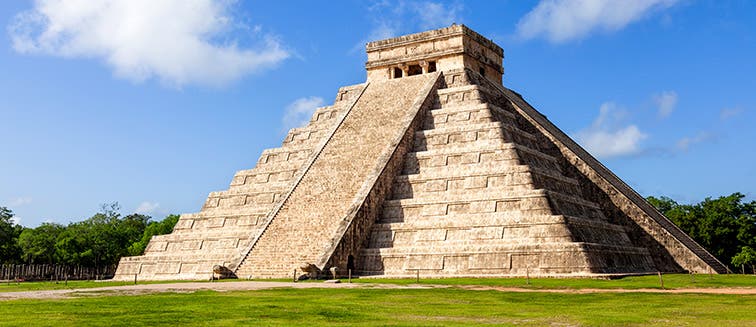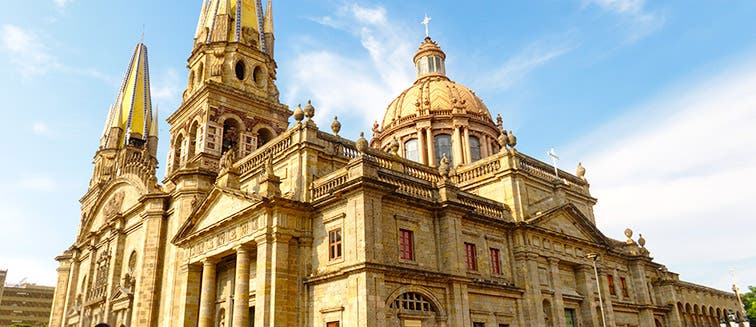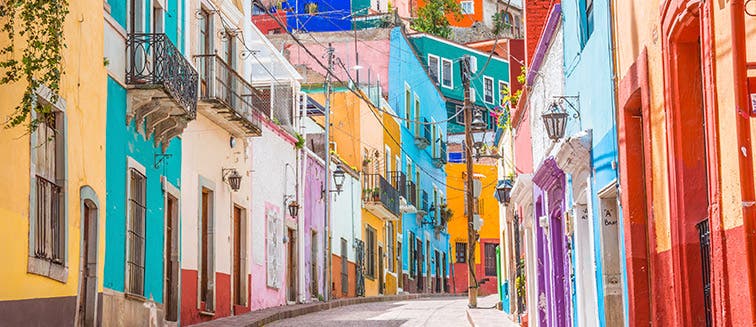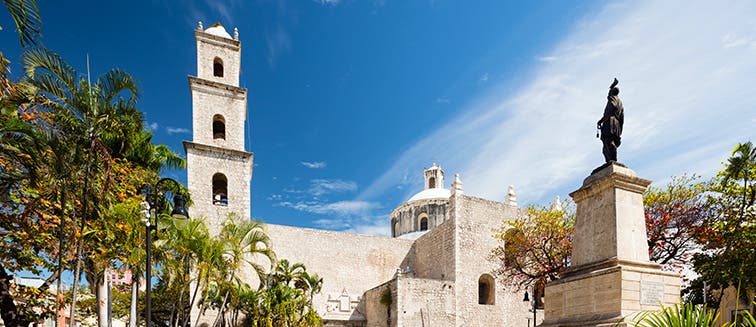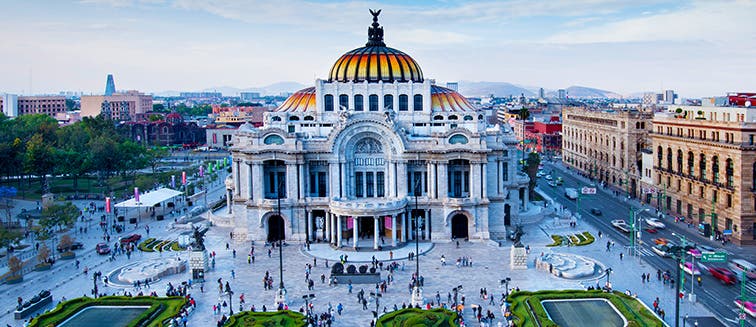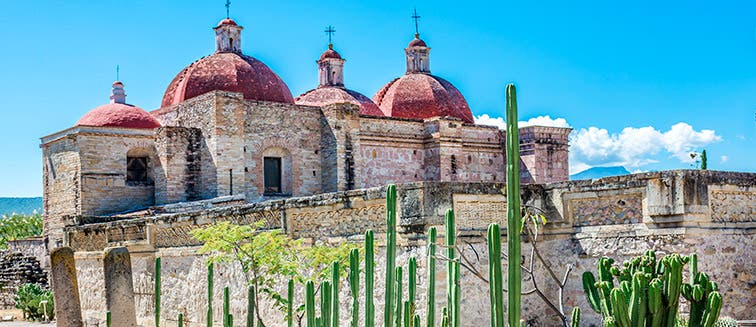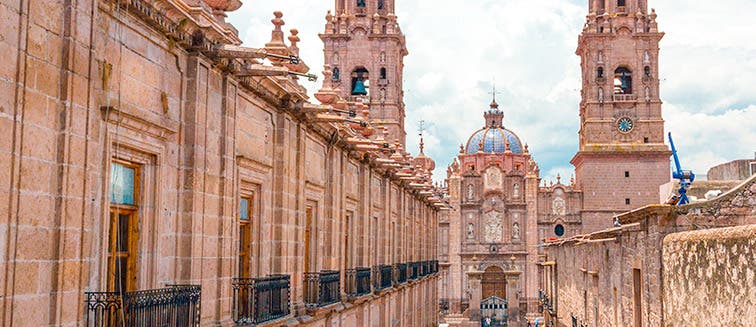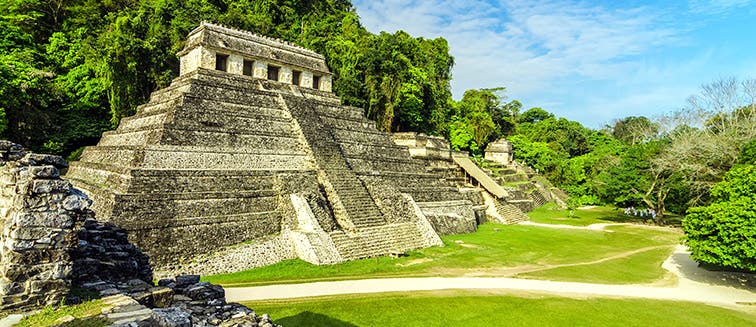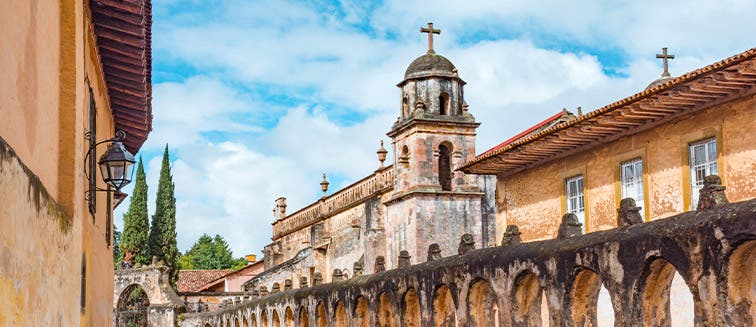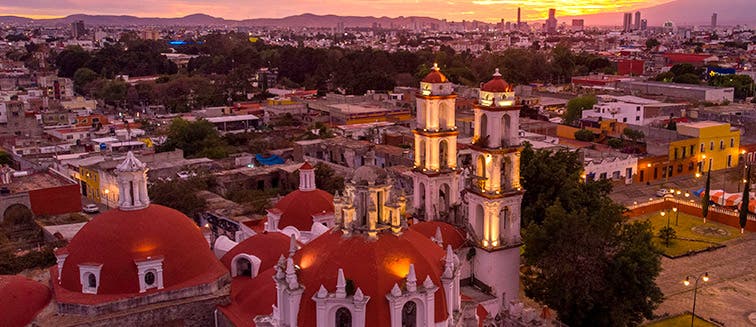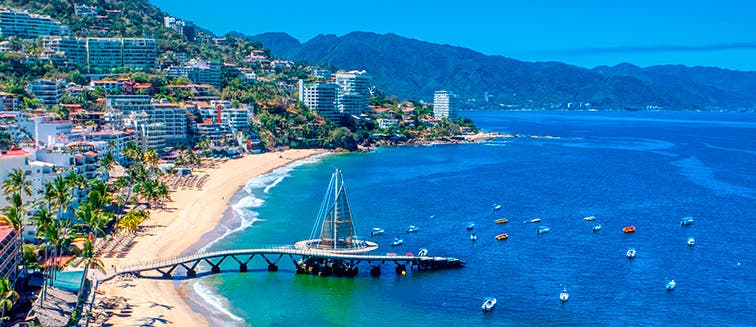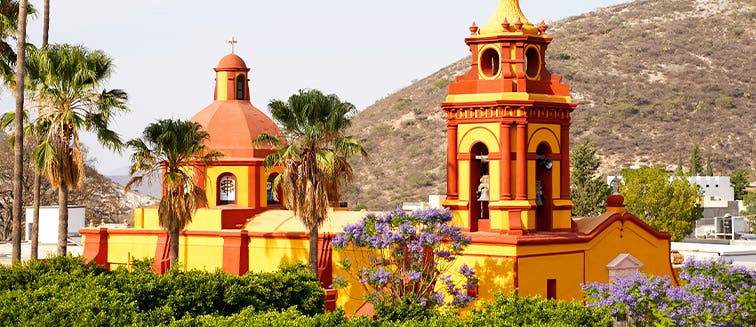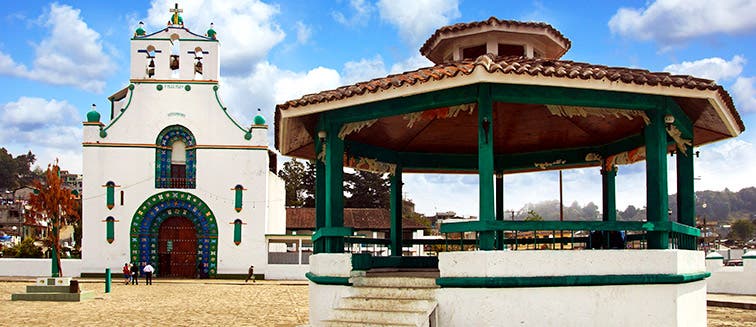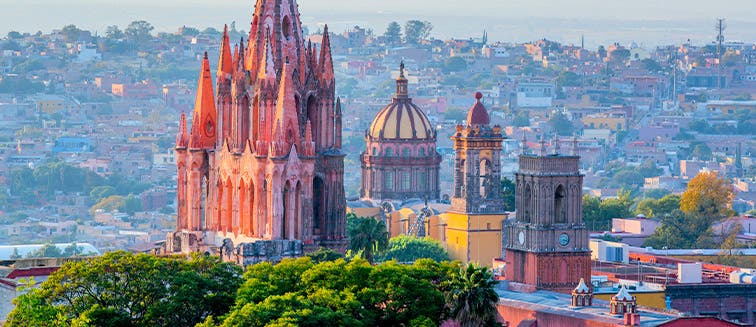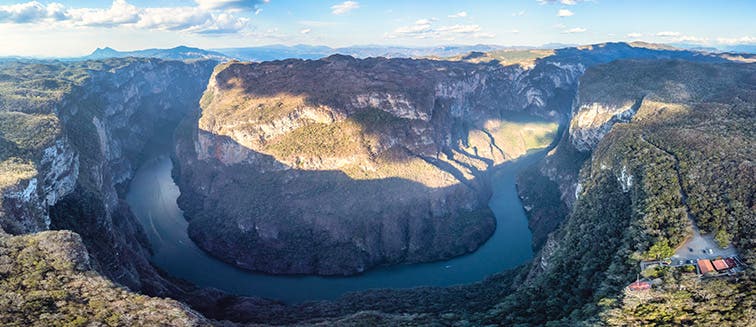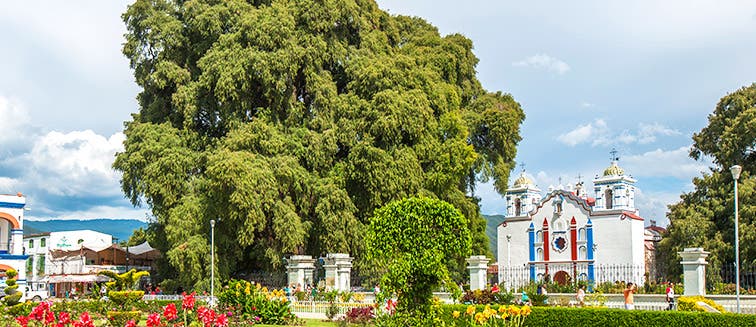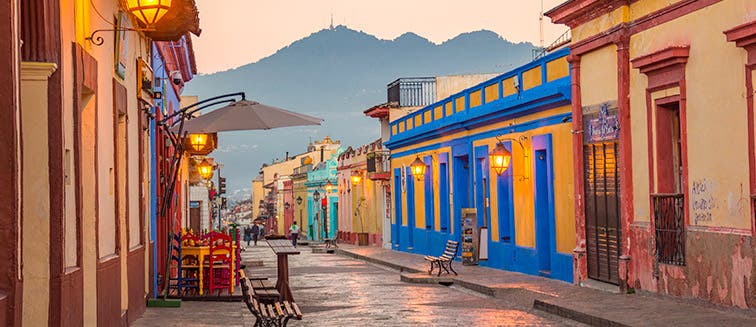A huge country, located in the southern part of North America, Mexico ignites the imagination with images of Mariachi bands, idyllic beaches and mysterious Mayan Ruins, such as those of Chichen Itza, Tulum and Palenque. Mexico shares borders with the United States, Belize and Guatemala, and has coastlines on the Pacific Ocean, the Caribbean Sea and the Gulf of Mexico, ensuring a fantastic mix of beach resorts, one of the country’s premier attractions. With a population numbering more than 120 million inhabitants, Mexico is a notoriously populous country and in fact the world’s largest Spanish-speaking nation.
The country is also home to one of the largest cities in the world, the sprawling metropolis of Mexico City, a high-altitude capital known for its 13th-century Aztec Templo Mayor and the baroque Catedral Metropolitana de México. Many package holidays to Mexico begin in this monumental city, although another must-see urban centre is the city of Guadalajara, which has a distinctly traditional Mexican atmosphere, and is known for its production of tequila. With a world-renowned cuisine, fantastic arts scene, modern cities, amazing archaeological sites and unspoiled beaches, especially along the Yucatan Peninsula, it is no wonder that holidays to Mexico are becoming increasingly popular.
History of Mexico
As one of the five cradles of civilisation, Mexico is perhaps most famous for the significance of its ancient communities and advanced Mesoamerican civilisations such as the Maya, Aztec and Teotihuacan. The Teotihuacan’s were among the first of Mexico’s major ancient civilisations, who began building their impressive capital near modern-day Mexico City in around 100 BC.
Without a doubt, the country’s most famous civilisation was the Mayans, who thrived between 250 and 900 AD, when they built elaborate cities, invented a calendar system and produced written languages. A tour of Mexico often includes the well-preserved ruins of the cities and temples built in this historic era. This civilisation is remembered for its pyramid temples and complex religious practices and their empire was centred in one geographical area covering all of the Yucatan Peninsula, modern-day Guatemala, Belize and parts of the Mexican states of Tabasco and Chiapas, as well as the western part of Honduras and El Salvador.
The size and organised nature of the civilisation ensured that it was relatively secure and was able to flourish for an impressively long period of time. Sadly, the Maya empire collapsed around the 10th century, possibly due to overpopulation and exhaustion of natural resources, shortly followed by the rise of the the later Aztec civilisation. The turning point for the history of Mexico came in the early 16th-century, with the arrival of Spanish Conquistadors, who colonised and took over a large proportion of the Aztec empire, with much of the indigenous population facing devastation from the onslaught of European diseases.
Following on from the conquistadors, missionaries arrived later in the century and converted many of the indigenous to Catholicism, marking a move away from the ancient religions and practices of Mexico’s great civilisations. The country was renamed ‘New Spain’ by the colonists and acted as an important base for further Spanish exploration in the Americas. During the following centuries, modern Mexican culture developed, especially in the areas of architecture, traditions and identity. By the early 20th-century, the Mexican people were tired of the inequality that plagued their country and a 10-year revolution, between 1910 and 1920, resulted in a number of social reforms and eventually in the re-establishment of communal farming practices, an important part of Mexican heritage.
Today, it is clear that the struggles faced by the Mexican people have fostered a strong sense of national identity and a huge amount of pride in the people for their ancient roots. A multi-centre holiday to Mexico is the most popular way to experience the different sides of life in the country, and the history which has shaped it.
Nature in Mexico
If Mexico’s fascinating history is not appealing enough, then its abundant nature and biodiversity is sure to impress you. In fact, Mexico is one of just 17 ‘Megadiverse’ countries in the world and the natural wealth of its wildlife and ecosystems are one of the major attractions for visitors on a holiday to Mexico. An amazing 707 reptile, 438 mammals and 26,000 plant species can be found in the country and the 34 biosphere reserves and 67 national parks serve to protect and support these impressive populations in the 4th most biodiverse country in the world. Native species include spider monkeys, vaquita porpoise sea cows, an endangered species found in the Gulf of California, ocelots, the rare Quetzal bird and the Mexican grey wolf.
Mexico is home to environments ranging from mountains to rainforests, volcanoes, deserts, reefs and mystical cenotes, and each environment has its own unique activities, wildlife and attractions to enjoy. From whale-watching on the Yucatan Peninsula to marvelling at swarms of Monarch butterflies in the Rosario Sanctuary of Anganguero and wildlife spotting in the Lacandona Jungle, Mexico’s natural abundance can be experienced in any number of ways. Admiring the Copper Canyon and its unique geological formations in Chihuahua, enjoying a boat ride on Lake Chapala, the largest freshwater lake in the country and visiting the petrified waterfalls of Oaxaca’s Hierve el Agua or the firefly forests of Tlaxcala are just some of the most unmissable experiences on a tour of Mexico.
Culture in Mexico
The three colours of Mexico’s flag hold important messages about Mexican identity; green represents the hope and victory of the people, white represents the purity of the country’s ideals and red represents the bloodshed of the nation's heroes, who fought for the freedom of their country.
Mexican culture is much loved around the world and known for its lively traditions and exciting music scene. Religion plays a big role in the lives of everyday people, especially Christianity, and there are a number of important Mexican saints, whilst traditional festivals, such as the Day of the Dead have ignited the imaginations of millions worldwide. On the Day of the Dead, a celebration held annually on the 2nd November, families gather together to remember their deceased relatives and to help their loved ones in their spiritual journey.
Households often decorate an altarpiece with offerings and photos of their passed relatives. The blend of both indigenous and Spanish influences has resulted in a rich gastronomic tradition and a wealth of folk arts and crafts, characterised by colourful embroidery, pottery and woven baskets and rugs. Mexico is also well known for producing a number of world-renowned artists, such as Frida Kahlo, known for her iconic self-portraits and surrealist modern art, and her husband Diego Riviera, famed for his murals and depictions of life in Mexico.
A package tour to Mexico will open your eyes to the rich culture, amazing biodiversity and fascinating history of this huge country as you walk through atmospheric temple ruins, swim in the turquoise waters of the many mystic cenotes or taste Tequila in its place of origin. After the excitement of visiting the country’s sights and attractions, relaxing on the tranquil beaches of the Riviera Maya whilst listening to the rhythms of the Mariachi band is the perfect way to unwind.

